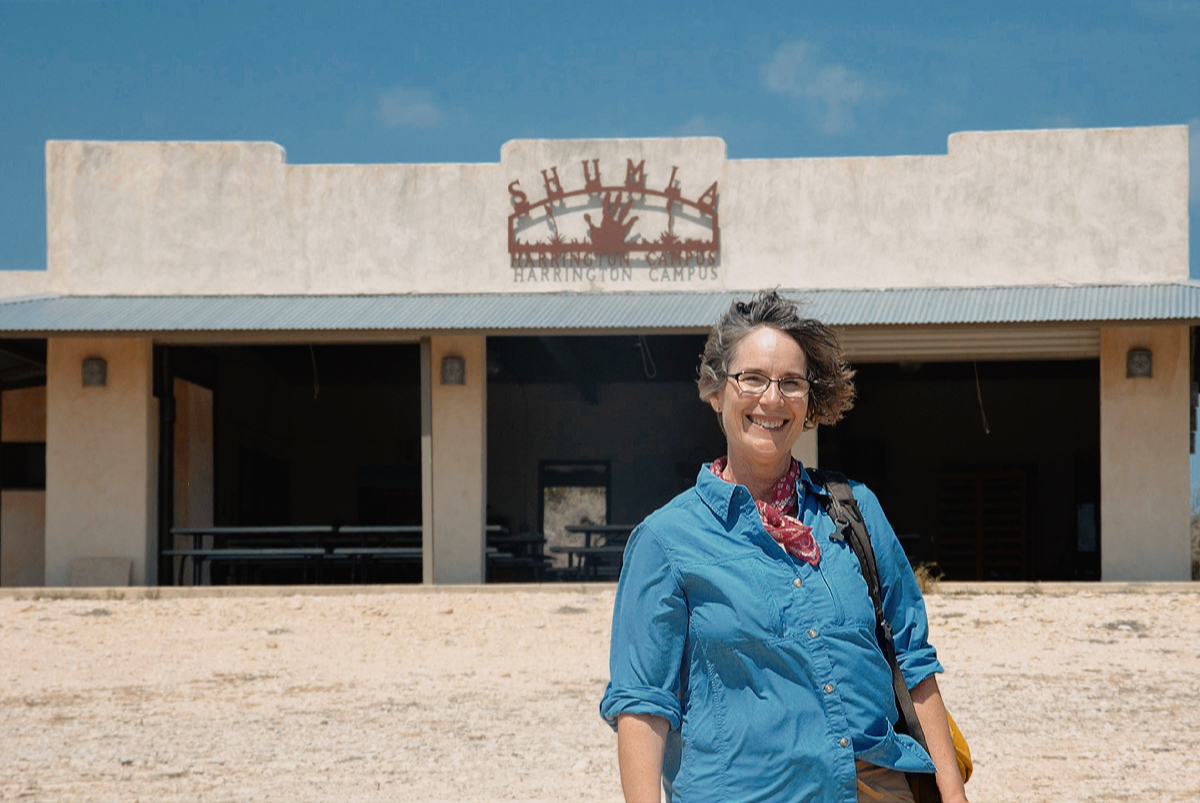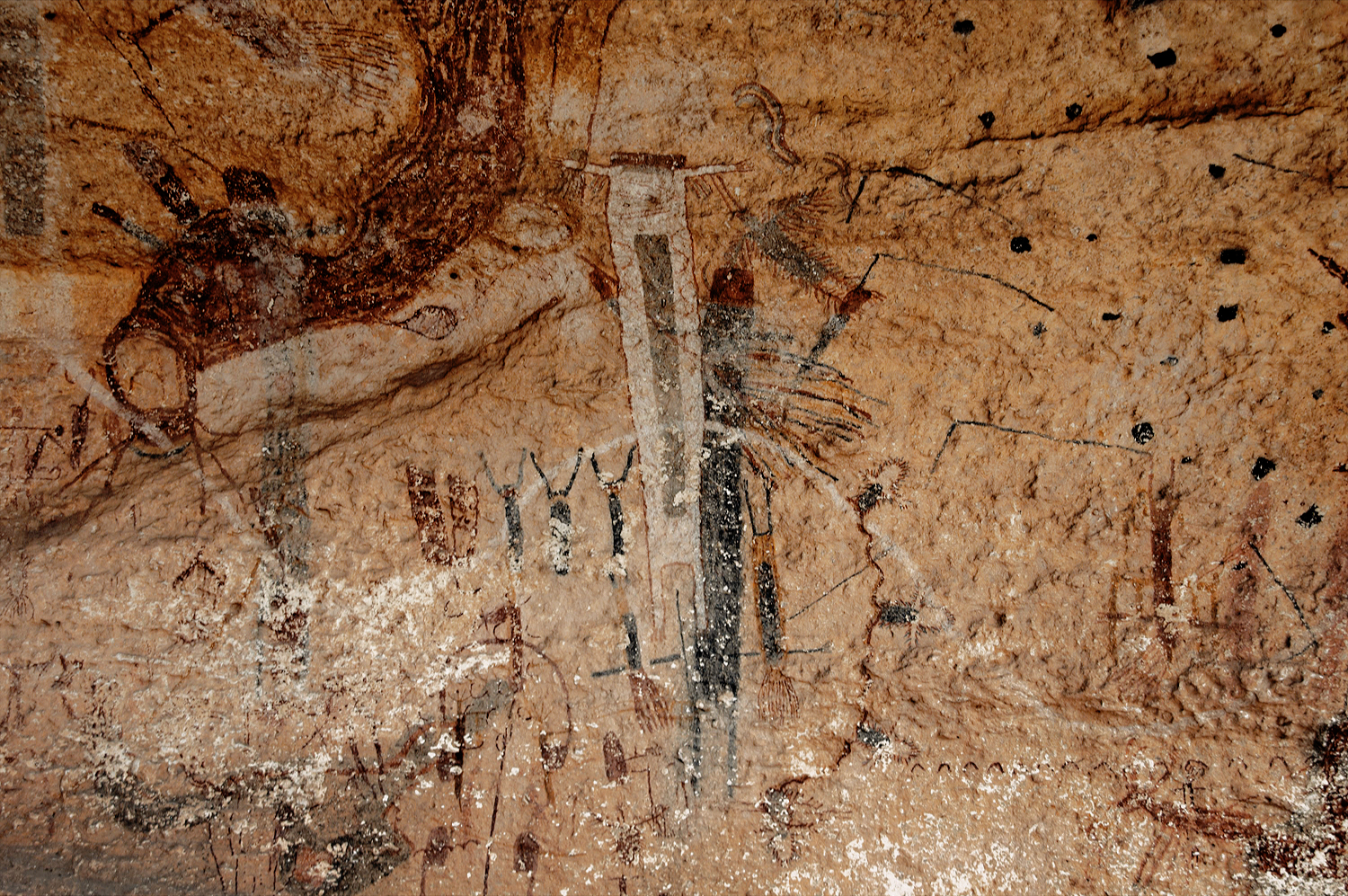
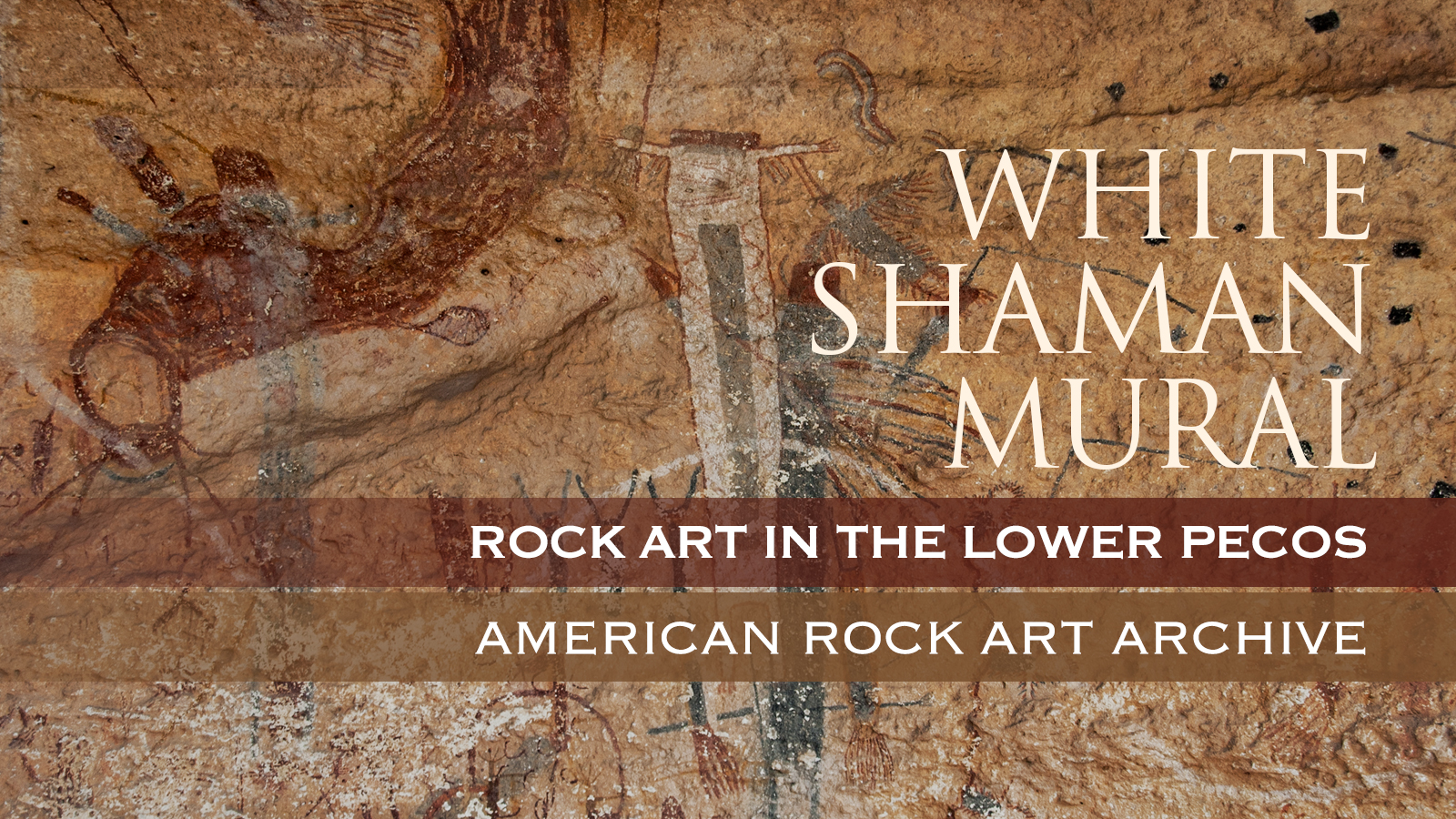
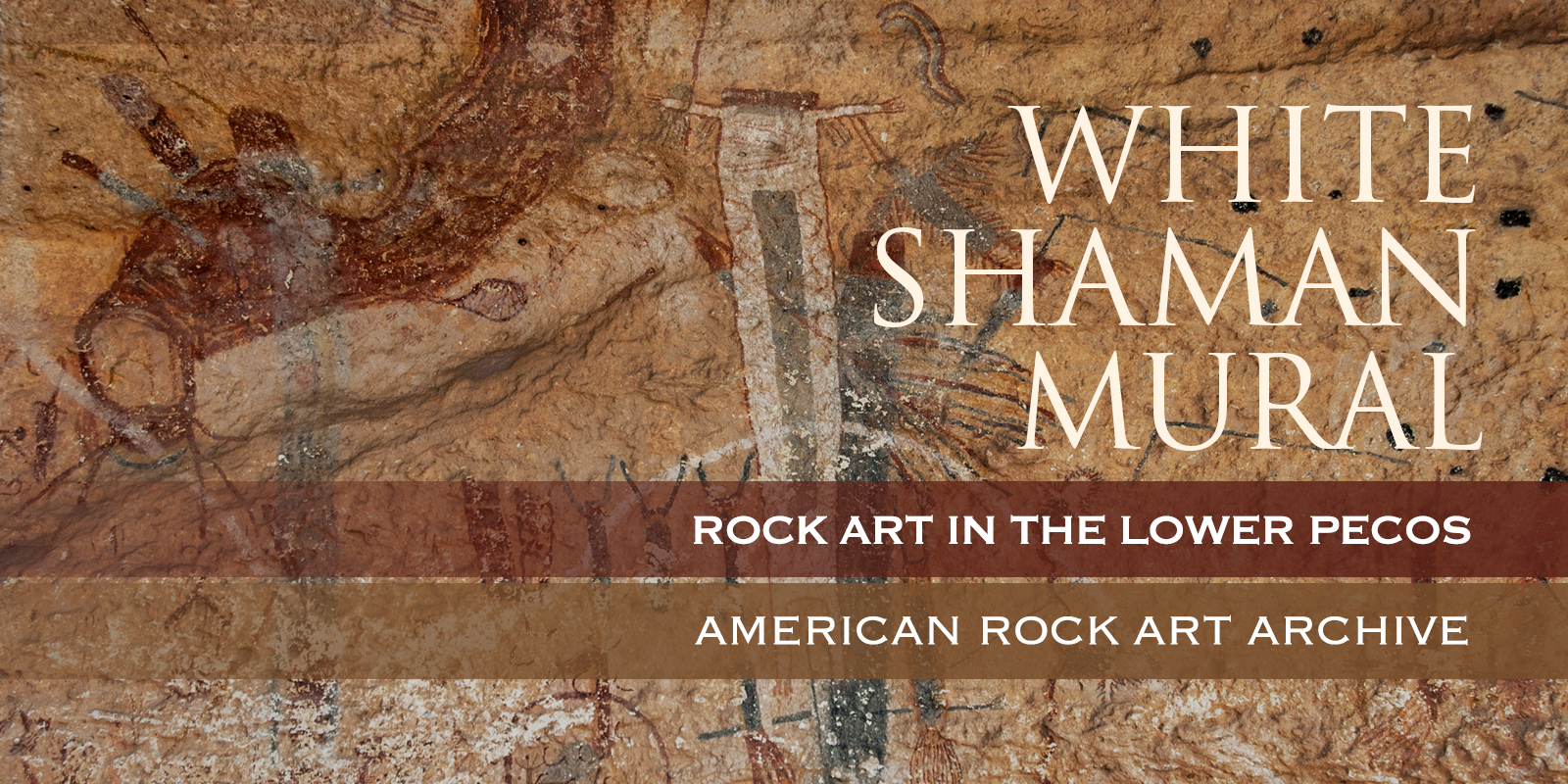
Timothy K. Perttula
Southwestern Historical Quarterly, Volume 121, Number 1, July 2017, pp.95-96 (Review)
Published by Texas State Historical Association
DOI: https://doi.org/10.1353/swh.2017.0033
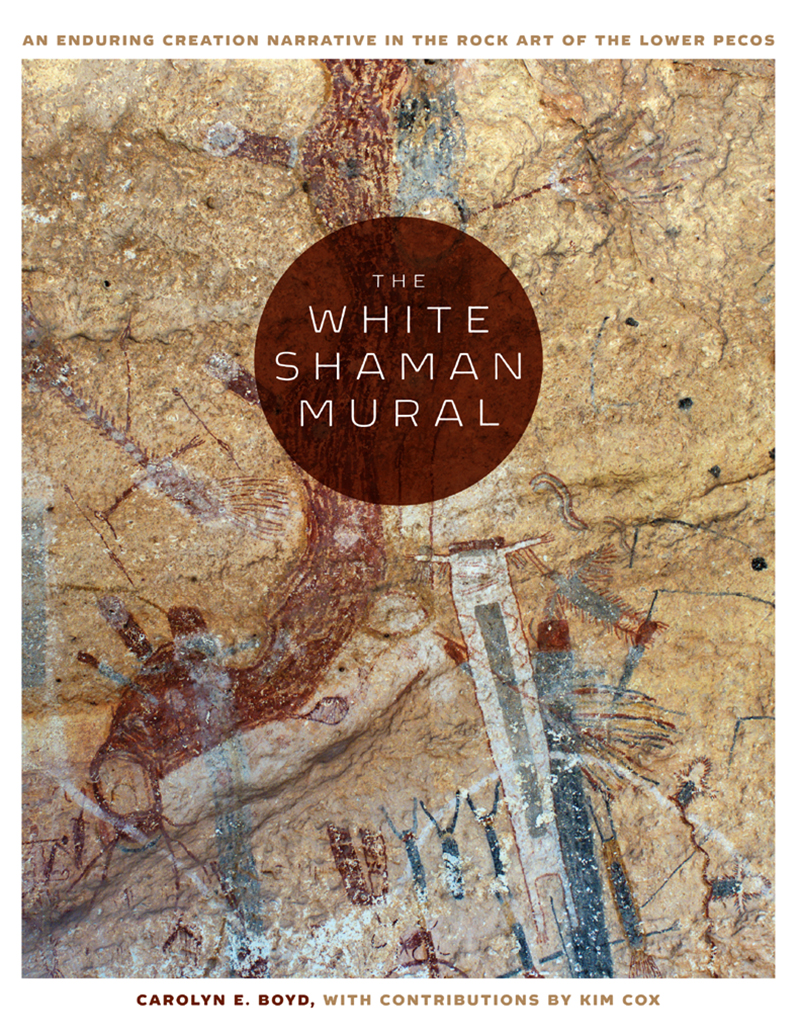
The Pecos River style rock art at White Shaman and more than two hundred other rock-shelters north of the Rio Grande in Texas includes anthropomorphic, zoomorphic, and geometric figures (plus others that are not identifiable as human or animal) that are painted in red, yellow, black, and white colors. The human-like anthropomorphs of varying sizes — from as little as three inches to more than twenty feet in height — are adorned with headdresses, clusters of feathers, and wrist or elbow tassels. The animals depicted in the rock art include deer and felines, as well as insects and snakes.
Boyd’s thoughtful and detailed research methods discussed in chapter 3 are employed in the remainder of the book in transcribing and reading the White Shaman Mural or visual text and their distinctive motifs. Boyd combines these methods with such ethnographic study as the creation mythology of the ancient Nahua and contemporary Huichol (both southern Uto-Aztecan speakers) in chapters 5 and 6.
The White Shaman painted art is placed not only in its ritual context for the lower Pecos River aboriginal peoples, but as a graphic manifestation of their ideological universe and worldview. The core elements of the rock art express the sacredness of cyclical time, the spatial layout of the cosmos — namely the overworld, earth, and underworld — and other concepts as a way to outline symbolically shared cosmological beliefs, traditions, and religious beliefs.
Such cores include cyclical time as a sacred entity, the delimitation of the sky, earth, and underworld as part of the spatial layout of the cosmos, and the creative and life-sustaining forces of supernatural and secular conflict. Boyd suggests that the White Shaman mural “is about cycles of time and spiritual meanings” and a “creation story detailing the birth of the sun and creation of time” (155). The mural henceforth represents cycles of time and spiritual meaning as a creation narrative and views of heaven as conceptualized by Lower Pecos peoples during Late Archaic times. Without this rock art, the Lower Pecos peoples “are yet another little understood and little regarded Archaic population eking out a meager existence as best they could. But with the art, worlds change and wonder begins” (162). Boyd’s book is highly recommended as an insightful way to understand the meaning of the Lower Pecos painted rock art and its meaning to aboriginal peoples thousands of years ago.
→ Subscribe free to the Bradshaw Foundation YouTube Channel
→ America Rock Art Index
→ The Rock Art of Baja California
→ Baja On Film
→ California Rock Art Foundation
→ Baja In Search of Painted Caves
→ Baja Great Murals Gallery
→ Sierra de San Francisco
→ Baja 2018 Expedition
→ The Rock Art of the Lower Pecos Canyonlands
→ Color Engenders Life
→ The Rock Art of Arizona
→ The Rock Art of Nevada
→ Coso Sheep Cult of East California
→ Coso Range Rock Art Gallery
→ The Rock Art of Moab Utah
→ The Rock Art of the Oregon Territory
→ RAN - USA Colloquium 2018
→ Removal & Camouflage of Graffiti
→ Graffiti Dates & Names
→ Vandalised Petroglyphs in Texas
→ Preserving Our Ancient Art Galleries
→ Bradshaw Foundation
→ Rock Art Network
